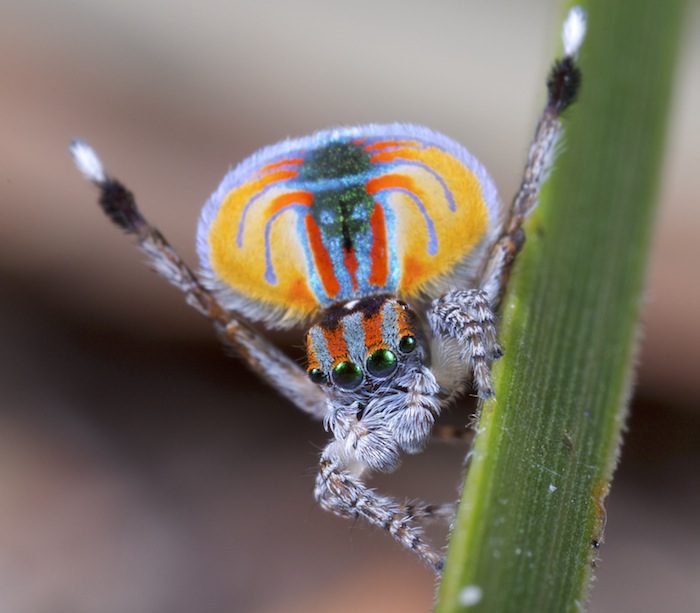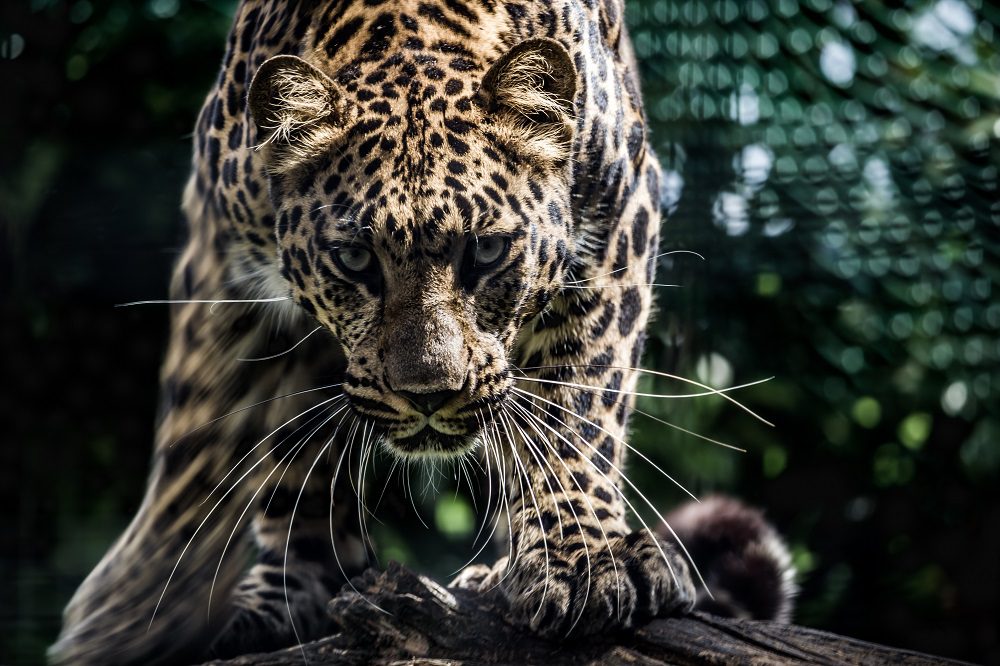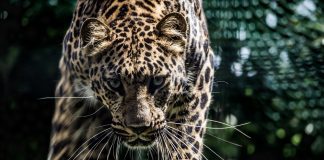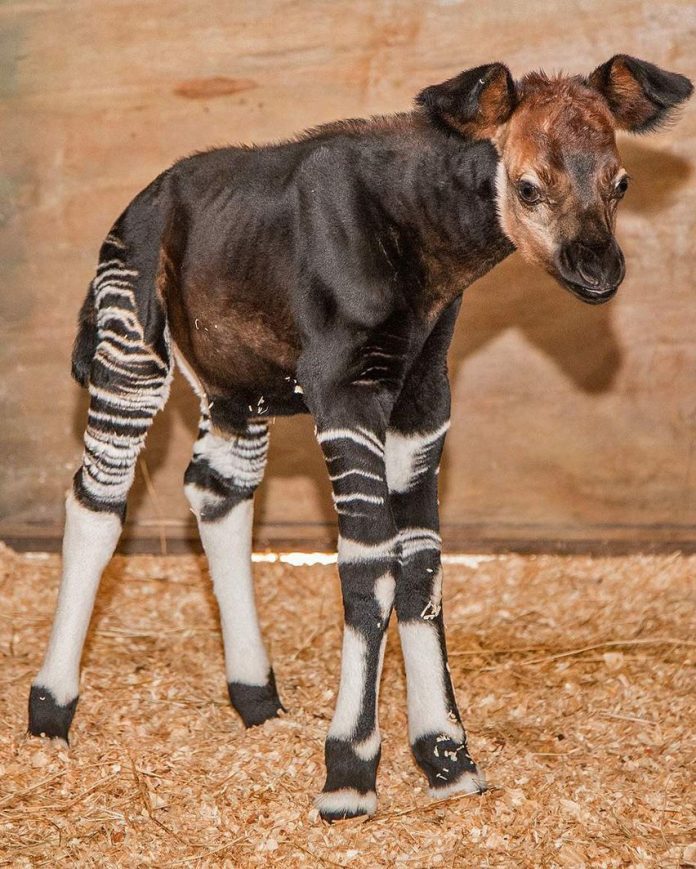
Description Of The Zebra Giraffe
The Zebra Giraffe, also known as the Okapi, is a unique and fascinating animal native to the rainforests of the Democratic Republic of Congo. With its striking striped legs and long, protruding tongue, the Okapi has often been called a “giraffe-zebra hybrid.” However, despite its similarity to both of these animals, the Okapi is a solitary, forest-dwelling herbivore that is closely related to the giraffe.
Okapi Baby & Juveniles
Okapi babies, or calves, are born with reddish-brown coats covered in white spots. These spots help to camouflage the calf in the dappled sunlight of the rainforest, protecting it from potential predators.
As they grow and mature, the Okapi’s coat becomes more uniformly chocolate brown in color. Juvenile Okapis resemble adults in size and appearance. Still, they do not develop the characteristic white stripes on their legs until they reach sexual maturity at around three years of age.
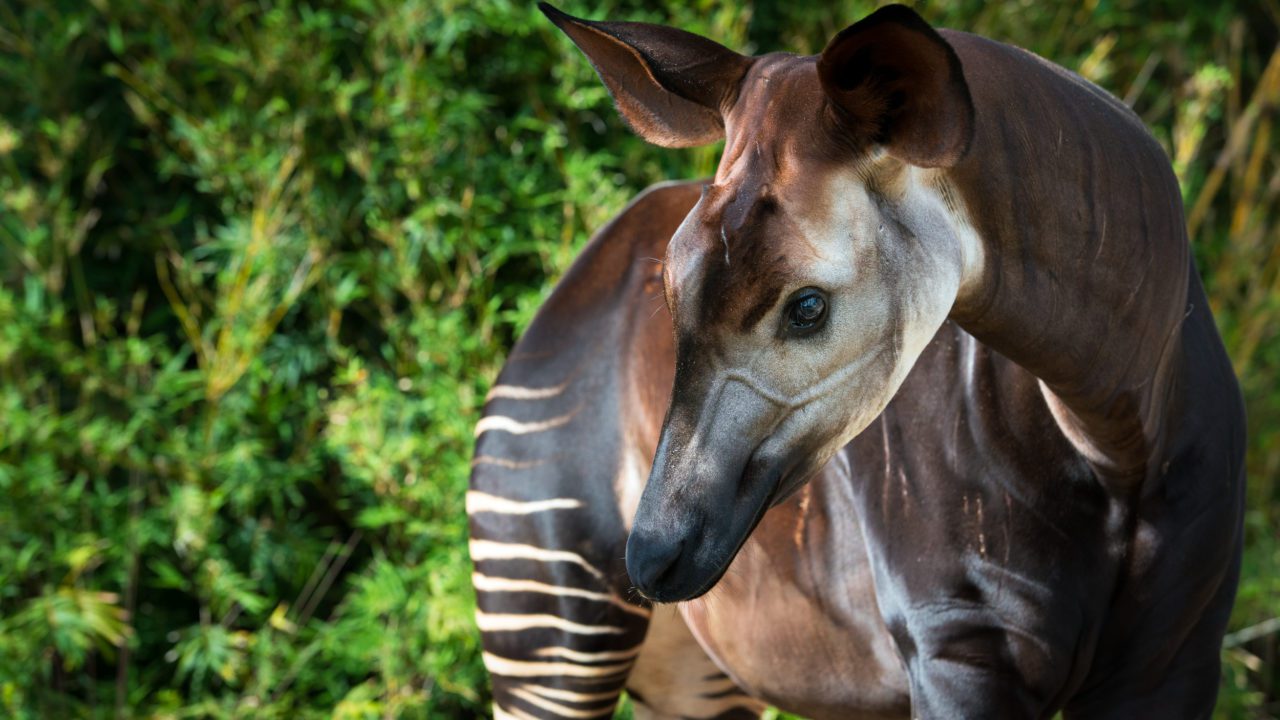
10 Okapi Facts
- The Okapi is the only living relative of the giraffe.
- The Okapi has a long, flexible tongue that it uses to strip leaves and buds from branches.
- Okapis have a highly developed sense of smell and hearing, which helps them to detect predators in their dense forest habitat.
- Okapis are fast runners and can reach speeds of up to 50 km/h (31 mph).
- Okapis are known to communicate through infrasonic calls, which are too low for humans to hear.
- Okapis are herbivores and primarily feed on foliage, fruits, and bamboo shoots.
- Okapis have a highly specialized digestive system that allows them to extract nutrients from their low-quality diet.
- Okapis are solitary animals and only come together to mate.
- Okapi mothers are known to be fiercely protective of their young.
- The Okapi is listed as an endangered species due to habitat destruction and poaching.
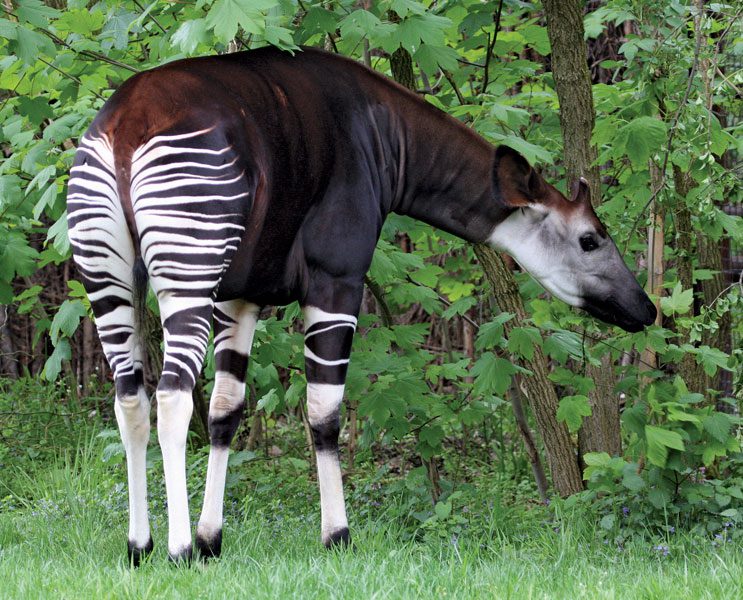
Where Is the Okapi Found?
The Okapi is native to the rainforests of the Democratic Republic of Congo. It is found in the northeastern part of the country, in an area known as the Ituri Rainforest. This region is home to a diverse array of plant and animal life, including many species that are found nowhere else on earth.
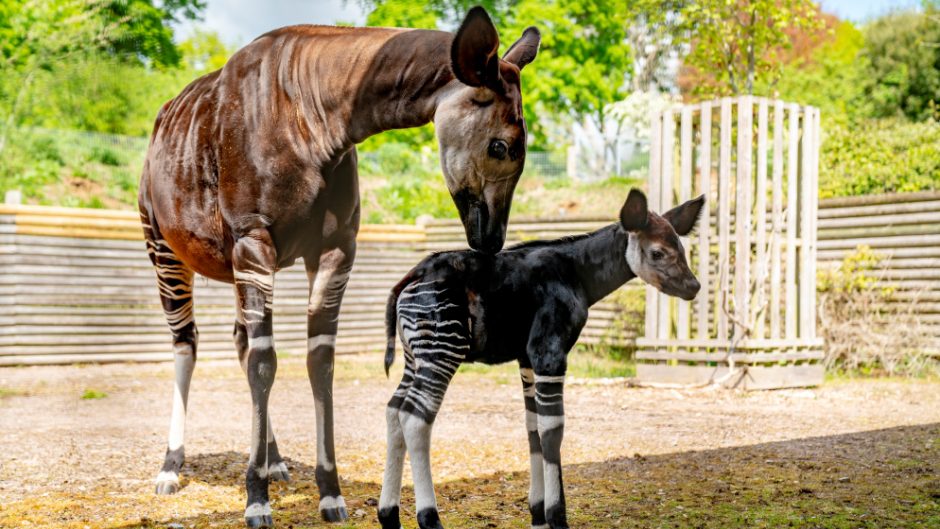
Habitat
Okapis are found in the dense, humid rainforests of the Democratic Republic of Congo. They are adapted to living in these dense, shadowy environments, with their large ears and sensitive hearing helping them to detect potential predators. Okapis are also agile runners and are able to quickly escape danger by darting through the underbrush.
Distribution
Okapis are found only in the northeastern part of the Democratic Republic of Congo, in an area known as the Ituri Rainforest. This region is home to a diverse array of plant and animal life, including many species that are found nowhere else on earth.
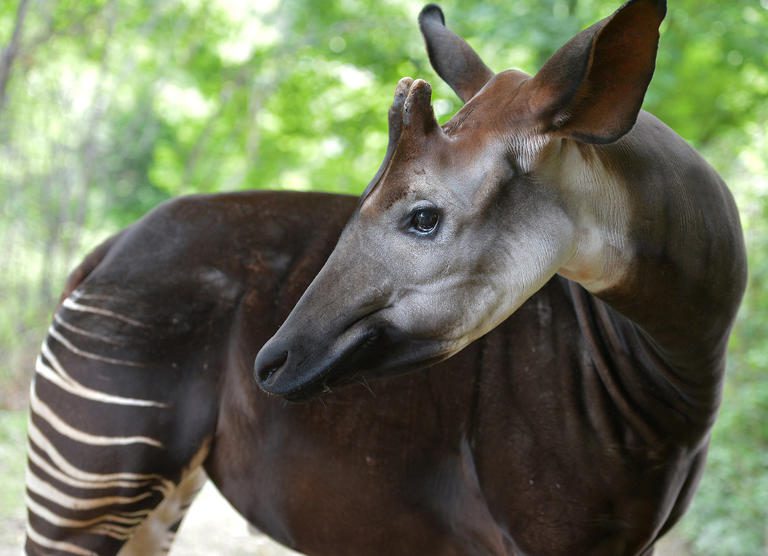
Okapi Adaptations
Okapis have a number of adaptations that help them to survive in their rainforest habitat. Their long, flexible tongues allow them to strip leaves and buds from branches, while their highly developed sense of smell and hearing helps them to detect potential predators. Okapis are also agile runners and are able to quickly escape danger by darting through the underbrush.
What Does The Word Okapi Mean?
The word “Okapi” comes from the Lese language of the Democratic Republic of Congo, where the animal is found. It is thought to be a combination of the words “o” and “kapia,” which mean “animal” and “neck,” respectively.
The name likely refers to the Okapi’s distinctive neck and head, similar to a giraffe. The Okapi was named by European scientists in the early 20th century, although it had long been known to the indigenous people of the Democratic Republic of Congo.
The Okapi was named after Sir Harry Johnston, the British explorer who first brought the animal to the scientific community’s attention.
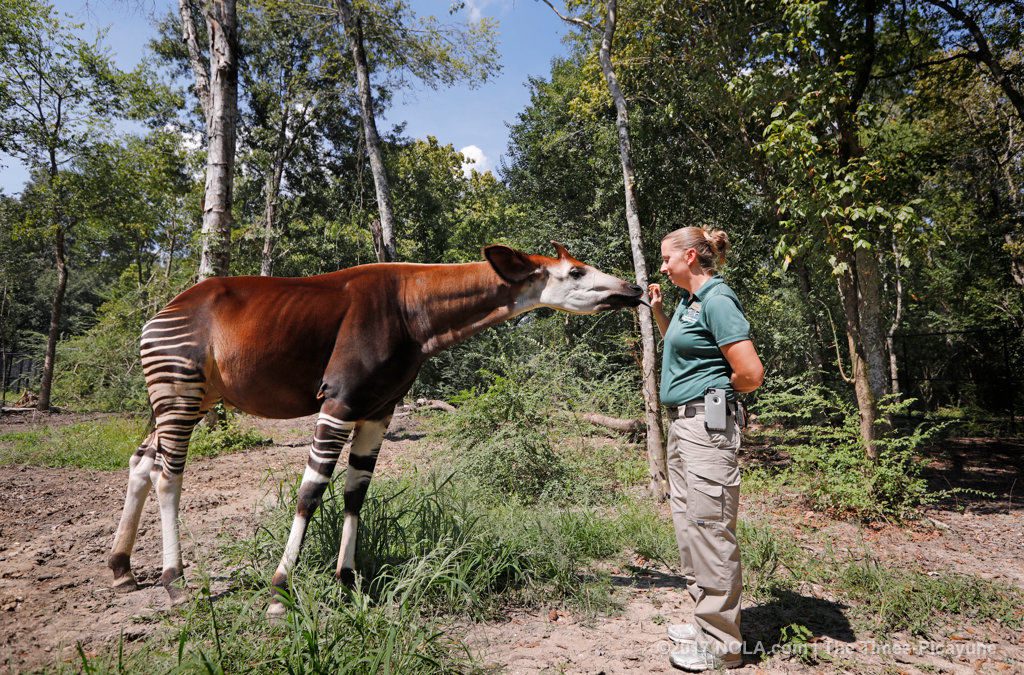
Okapi Scientific Name, Classification, and History
The Okapi (Okapia johnstoni) is a member of the Giraffidae family, which includes giraffes and their closest living relative, the Okapi. The Okapi was first described by European scientists in the early 20th century, although it had long been known to the indigenous people of the Democratic Republic of Congo. The Okapi was named after Sir Harry Johnston, the British explorer who first brought the animal to the scientific community’s attention.
The Evolution of the Okapi
The Okapi is thought to have evolved from a group of giraffes that became isolated in the rainforests of central Africa around 20 million years ago.
Over time, these giraffes evolved several adaptations that allowed them to thrive in their dense, shadowy habitat, including a short, stocky build, agile legs, and a long, flexible tongue.
Today, the Okapi is the only living relative of the giraffe, and it shares many of the same characteristics, including a distinctive coat pattern and a long neck.
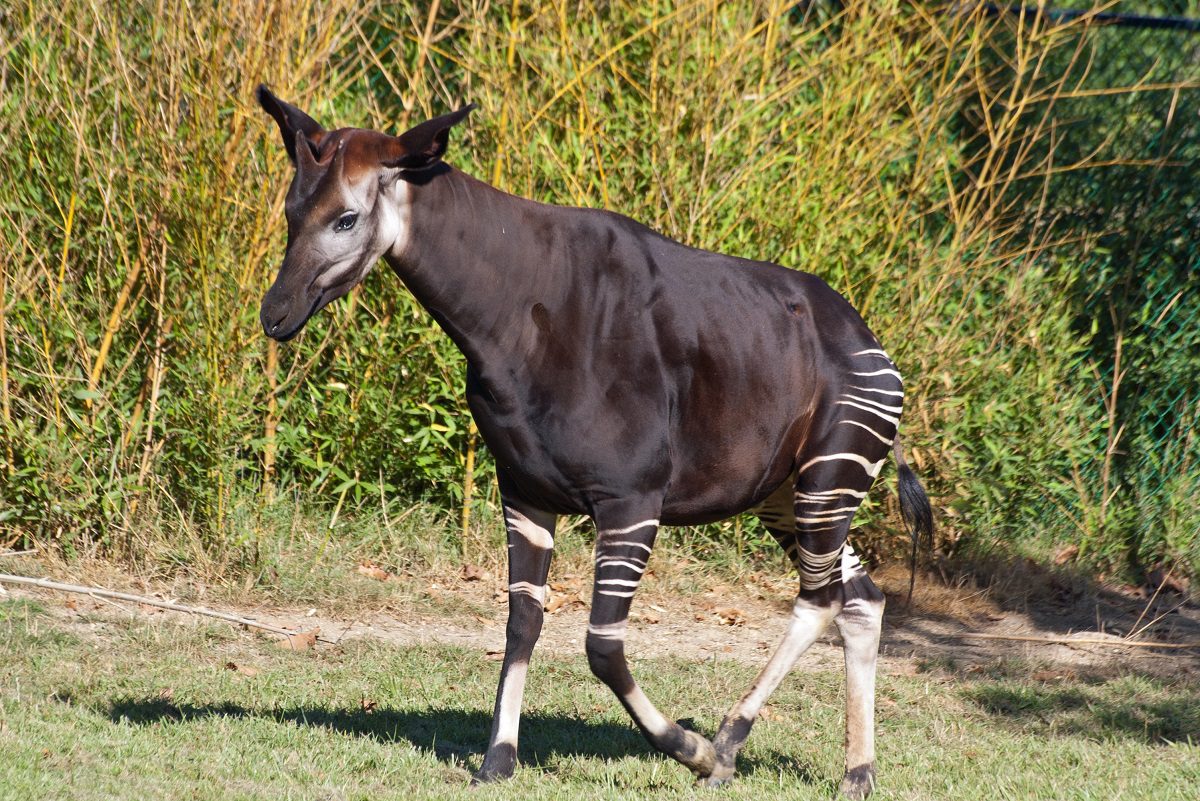
The Zebra Giraffe Characteristics
The Okapi is a large, solitary herbivore that is native to the rainforests of the Democratic Republic of Congo. It has a stocky, horse-like build and is covered in a chocolate brown coat that is marked with white stripes on its legs.
The Okapi has a long, flexible tongue that it uses to strip leaves and buds from branches and a highly developed sense of smell and hearing. Okapis communicate through infrasonic calls, which are too low for humans to hear.
Okapi Ecology and Behaviour
Okapis are solitary animals most active in the early morning and late afternoon. They spend much of their time feeding on foliage, fruits, and bamboo shoots, and they have a highly specialized digestive system that allows them to extract nutrients from their low-quality diet. Okapis are also fast runners and can quickly escape danger by darting through the underbrush.

Okapi Predators
Okapis have few natural predators, but they are occasionally preyed upon by leopards and crocodiles. They are also threatened by habitat destruction and poaching.
Okapi Diet
Okapis are herbivores and primarily feed on foliage, fruits, and bamboo shoots. They have a highly specialized digestive system that allows them to extract nutrients from their low-quality diet.
Okapis Reproduction
Okapis are solitary animals and only come together to mate. Female Okapis give birth to a single calf after a gestation period of around 14-16 months. The calf is born with a reddish-brown coat covered in white spots, which helps to camouflage it in the dappled sunlight of the rainforest. Okapi mothers are known to be fiercely protective of their young and will aggressively defend their calves from potential predators.
What Noise Does an Okapi Make?
Okapis are known to communicate through infrasonic calls, which are too low for humans to hear. They may also make other sounds, such as whinnying or grunting, but these are not well-studied.
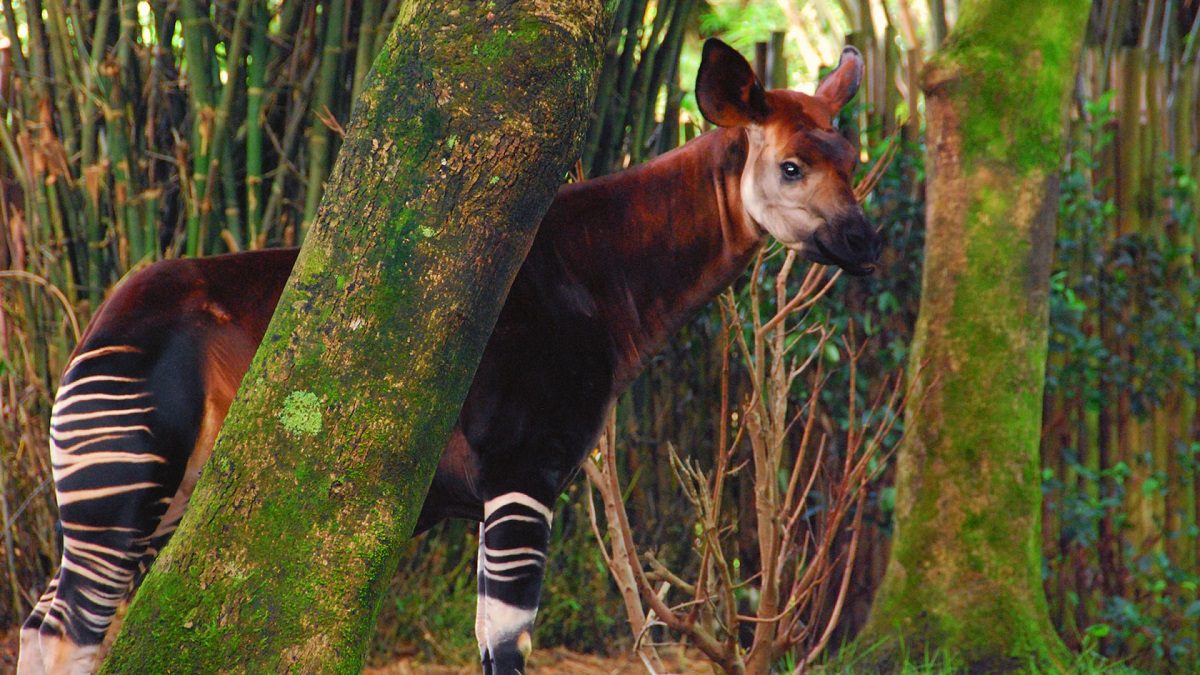
Okapis Threats and Conservation
Okapis are listed as an endangered species due to habitat destruction and poaching. The Okapi Conservation Project is working to protect Okapi’s habitat and raise awareness about the importance of conserving these unique and fascinating animals.
List Of Okapis in Zoos Worldwide
There are several Okapis kept in zoos worldwide, including:
- San Diego Zoo, USA
- Toronto Zoo, Canada
- London Zoo, UK
- Berlin Zoo, Germany
- Singapore Zoo, Singapore
- Taronga Zoo, Australia
- National Zoological Gardens of South Africa, South Africa
- National Museum of Natural History, France
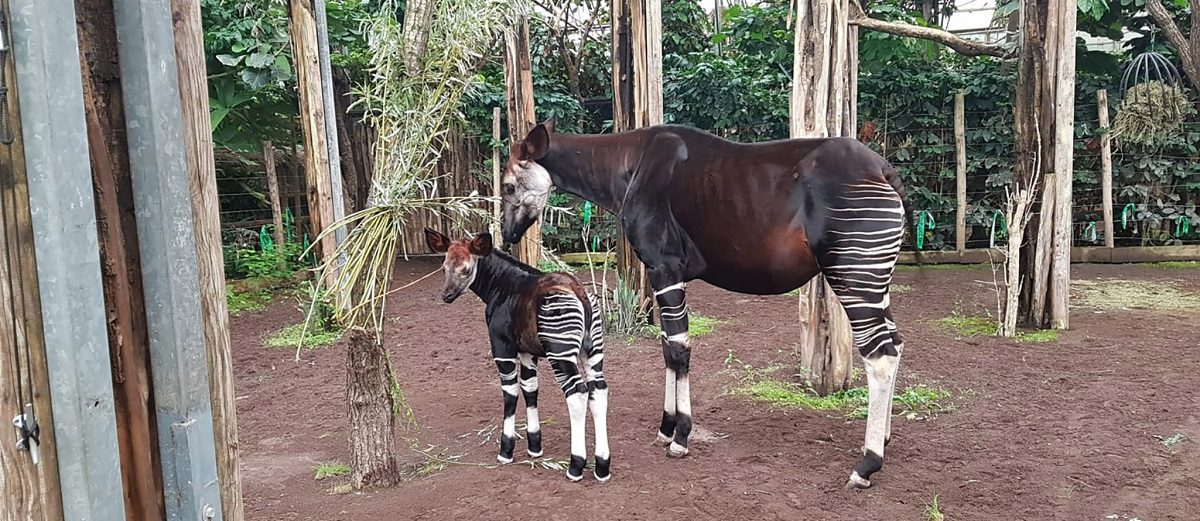
People also ask
Yes, the Okapi is closely related to the giraffe and is the only living relative of the giraffe.
What two animals make an okapi?
The Okapi is not a hybrid of two different animals. It is a unique species that is closely related to the giraffe.
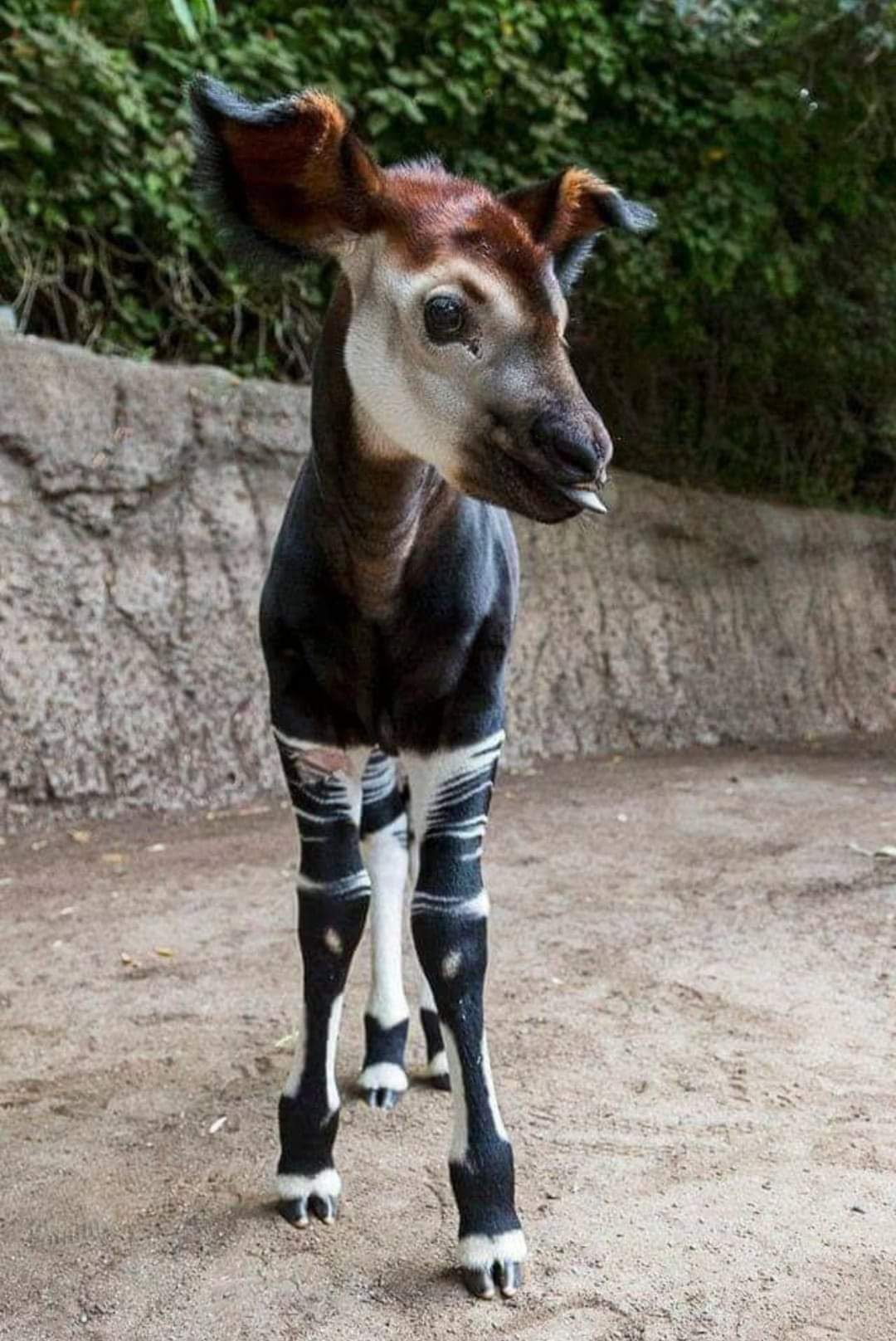
Are okapis dangerous?
Okapis are not aggressive animals and are not considered to be dangerous. However, they are solitary creatures and may become defensive if they feel threatened.
Can you have an Okapi as a pet?
It is not legal to own an Okapi as a pet. Okapis are endangered animals and are protected by law. They should only be kept in accredited zoos or other professional care facilities.
Resources
The Okapi Conservation Project is a non-profit organization that protects Okapi’s habitat and raises awareness about the importance of conserving these unique and fascinating animals.
The organization was founded in 1987 by the Okapi Wildlife Reserve, located in the Democratic Republic of Congo. The Okapi Conservation Project works closely with local communities, governments, and other conservation organizations to promote the long-term survival of the Okapi.
Some of the activities that the Okapi Conservation Project is involved in include:
- Protecting Okapi habitat: The Okapi Conservation Project works to protect the rainforests of the Democratic Republic of Congo, which is home to the Okapi. This includes efforts to reduce deforestation and habitat destruction, as well as efforts to protect the Okapi from poaching and other threats.
- Raising awareness: The Okapi Conservation Project raises awareness about the Okapi and the importance of conserving this unique and endangered animal. This includes educational programs, materials, and outreach and advocacy efforts.
- Supporting research: The Okapi Conservation Project supports research on the Okapi and its habitat to understand the animal and its needs better. This includes studies on Okapi’s behavior, ecology, and conservation biology.
- Providing support to local communities: The Okapi Conservation Project works closely with local communities in the Democratic Republic of Congo, providing support and resources to help them live sustainably and in harmony with the Okapi and other wildlife.
The Okapi Conservation Project is dedicated to the long-term survival of the Okapi and the conservation of the rainforests of the Democratic Republic of Congo.

The San Diego Zoo is a world-renowned zoo located in San Diego, California, USA. It is home to more than 4,000 animals, representing over 650 species. The San Diego Zoo is known for its commitment to animal conservation and is involved in several worldwide conservation programs.
The San Diego Zoo is home to several Okapis, which can be seen in the “Ituri Forest” exhibit. The exhibit is designed to replicate Okapi’s natural rainforest habitat. It features several other animals native to the Democratic Republic of Congo, including gorillas, chimpanzees, and various bird species.
Visitors to the San Diego Zoo can see the Okapis up close and learn more about these fascinating animals through educational programs and materials. The zoo also offers several behind-the-scenes tours, including the “Okapi Safari” tour, which allows visitors to see the Okapis in a more intimate setting and learn more about their care and conservation.
The San Diego Zoo is a great place to learn about the Okapi and other endangered species worldwide.
The London Zoo is a world-famous zoo located in the heart of London, UK. It is home to more than 750 species of animals, including many rare and endangered species. The London Zoo is known for its commitment to animal conservation and is involved in a number of conservation programs around the world.
The London Zoo is home to a number of Okapis, which can be seen in the “Rainforest Life” exhibit. The exhibit is designed to replicate the Okapi’s natural rainforest habitat and features several other animals native to the Democratic Republic of Congo, including gorillas, chimpanzees, and various bird species.
Visitors to the London Zoo can see the Okapis up close and learn more about these fascinating animals through educational programs and materials. The zoo also offers behind-the-scenes tours, including the “Okapi Encounter” tour, which allows visitors to see the Okapis in a more intimate setting and learn more about their care and conservation.

The Berlin Zoo, also known as the Zoologischer Garten Berlin, is a world-famous zoo located in the heart of Berlin, Germany. It is home to more than 20,000 animals, representing over 1,500 species. The Berlin Zoo is known for its commitment to animal conservation and is involved in a number of conservation programs around the world.
The Berlin Zoo is home to several Okapis, which can be seen in the “Ituri Forest” exhibit. The exhibit is designed to replicate Okapi’s natural rainforest habitat. It features several other animals native to the Democratic Republic of Congo, including gorillas, chimpanzees, and various bird species.
Visitors to the Berlin Zoo can see the Okapis up close and learn more about these fascinating animals through educational programs and materials. The zoo also offers several behind-the-scenes tours, including the “Okapi Safari” tour, which gives visitors the opportunity to see the Okapis in a more intimate setting and learn more about their care and conservation.






































